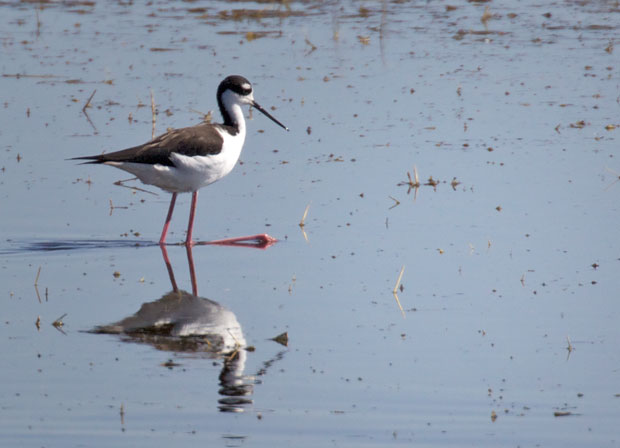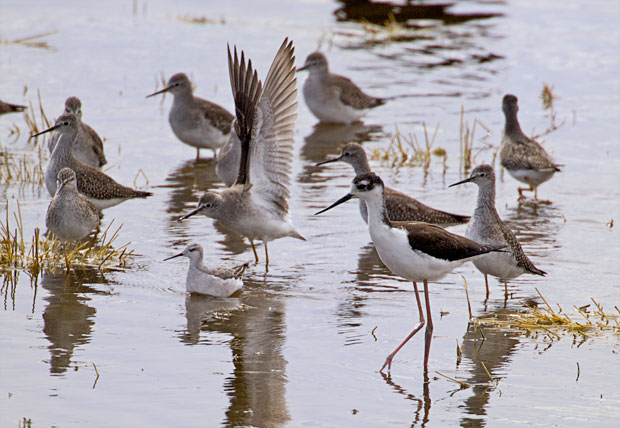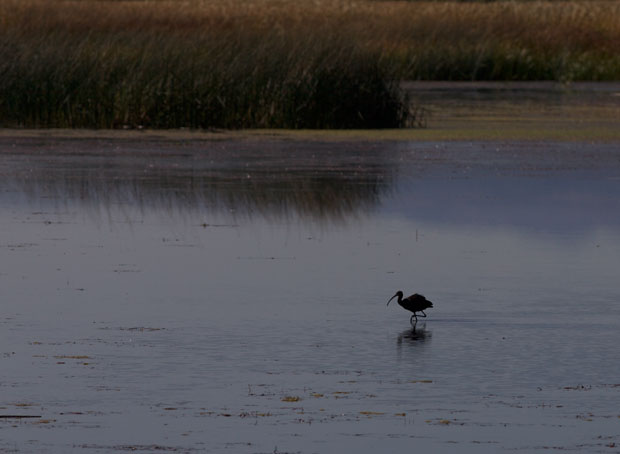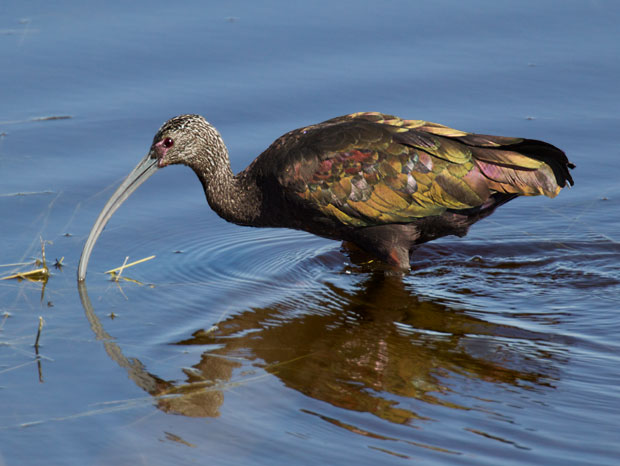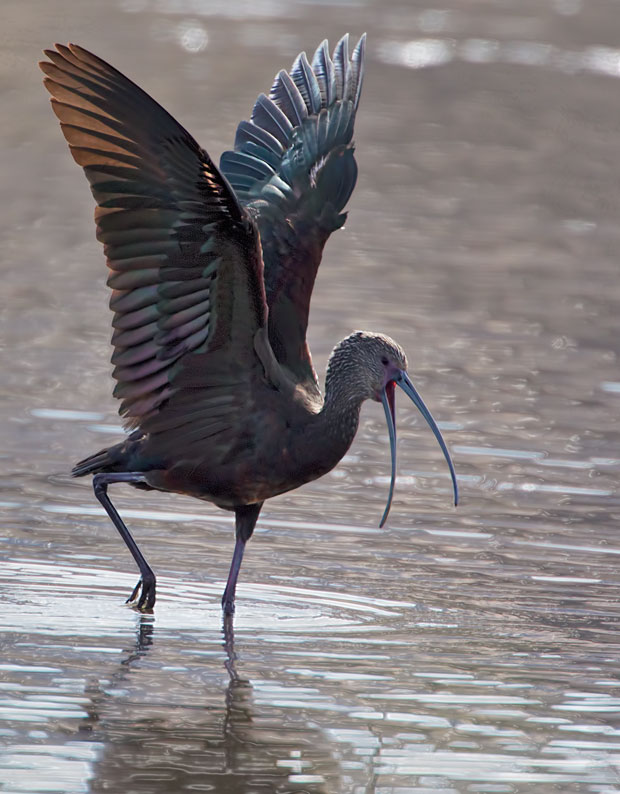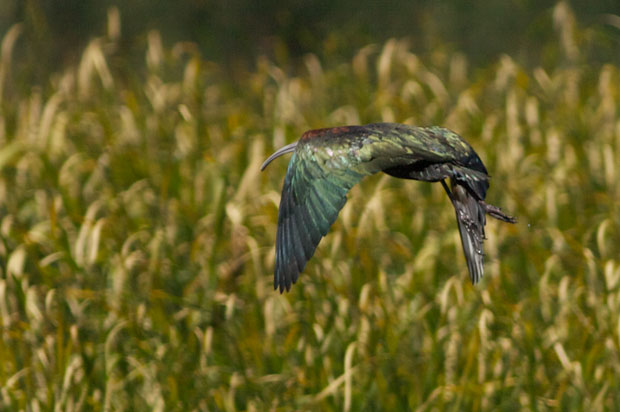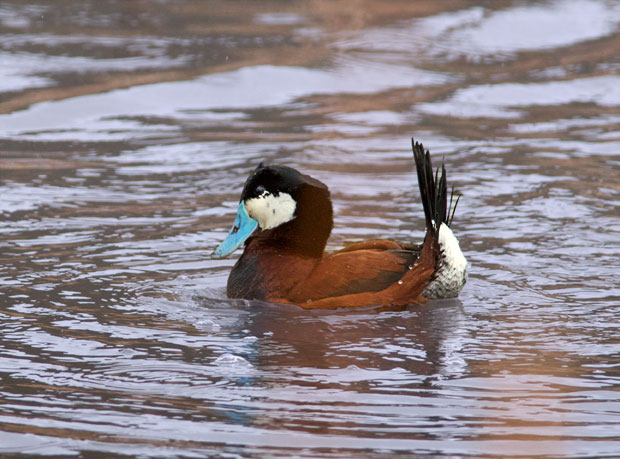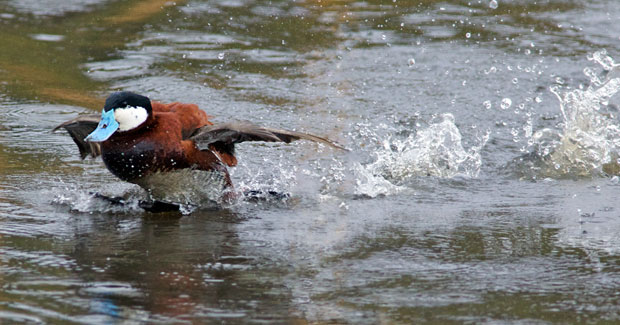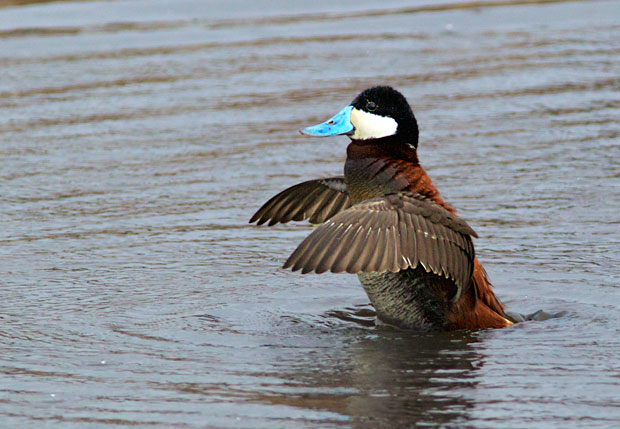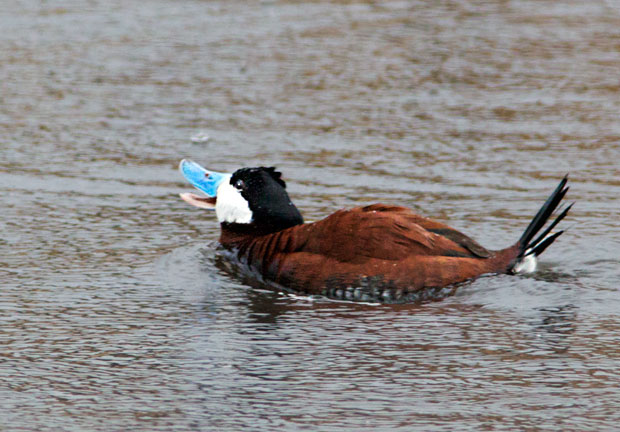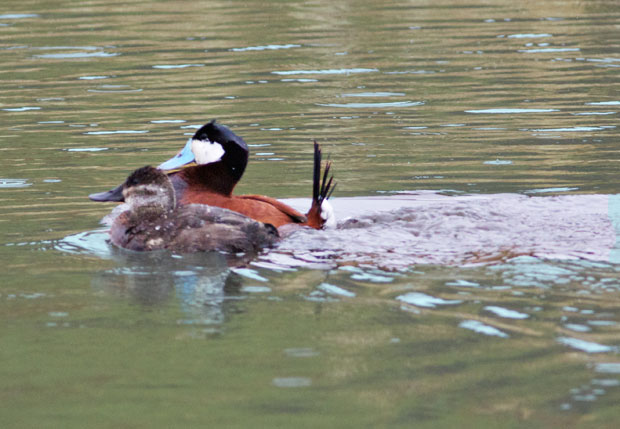Despite my photographic frustration at Malheur, I had a good time and am looking forward to returning there, hopefully at least a couple more times this year and staying longer when I do return. A day isn’t nearly long enough to see what’s there, unless it’s snowing and sleeting.
Here are three of my favorite shots that I haven’t already posted. I’ve been hearing about a Redheaded duck several times locally, but have never seen it. However, when I saw this duck in the background while photographing the Ruddy Ducks, I knew immediately that I’d never seen one before and realized, at the same moment, that it must be the Redhead in full breeding colors. Luckily, I also happened to see it during one of the few breaks in the clouds.
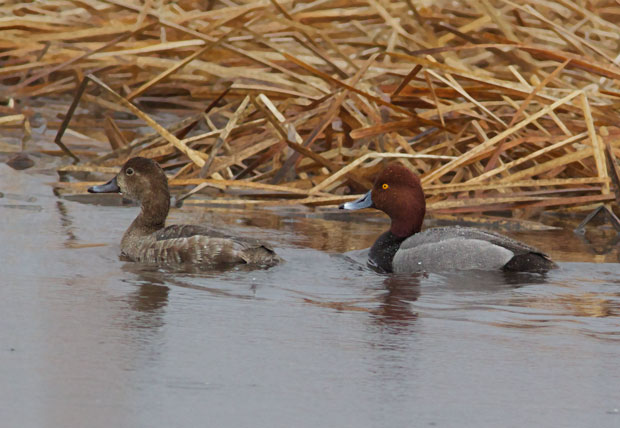
Another favorite also happens to be a shot of birds I’ve never seen before. In fact, I didn’t “see” them until I was sitting in front of my computer long after the trip. When they flew over, I actually thought they were a flock of cormorants, not realizing differently until I actually was deciding which pictures to delete. Next time I’ll be hunting for White-faced Ibis on the ground.
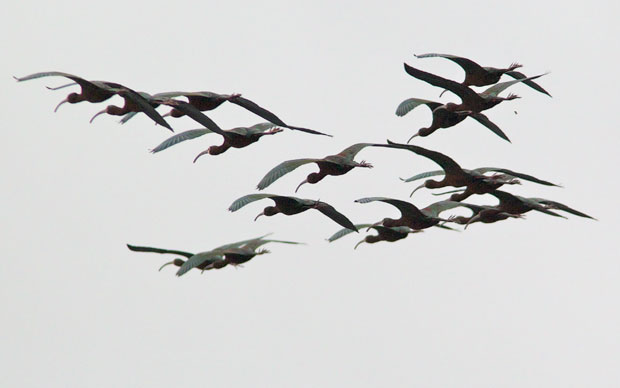
The last shot is one of birds I was expecting to see in Toppenish on my return visit. When I first saw these in the distance, I thought it was a flock of gulls, but as it got closer it was quite clear it was actually a large flock of White Pelicans.
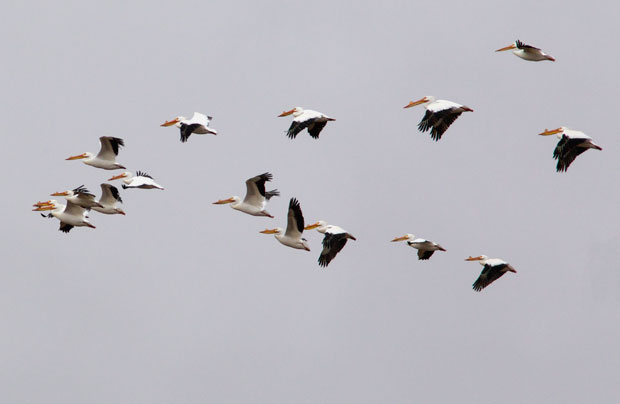
While my favorite bird shots are shots of individual birds flying, shots like this are one of the main reasons I keep using my old 400mm telephoto instead of the newer 500mm lens with a doubler. I find it much easier to get shots of flying birds with a hand-held lens rather than a camera mounted on a tripod.
The more serious I become about photographing wildlife, the more I realize the limitations and the trade-offs you make every time you choose a camera or lens, no matter how good or expensive it might be. I’m constantly pushing the limits of my equipment, trying to meet my needs rather than meeting the needs of the equipment.
